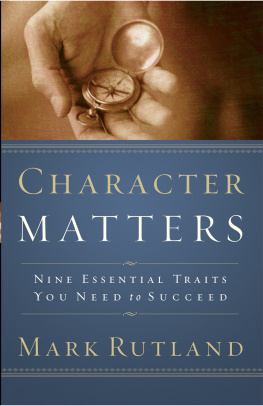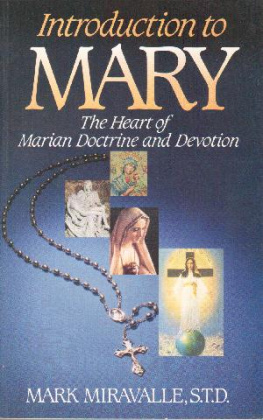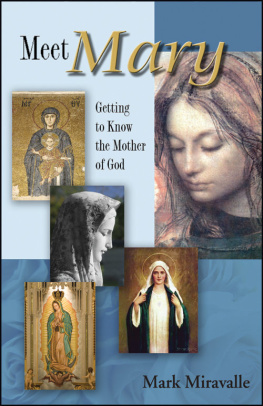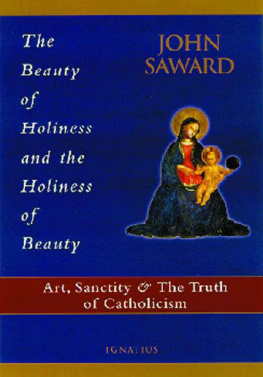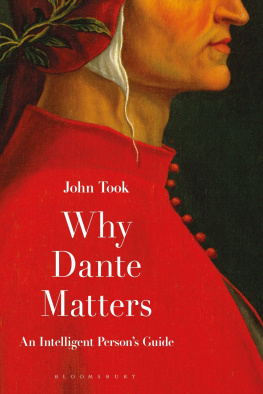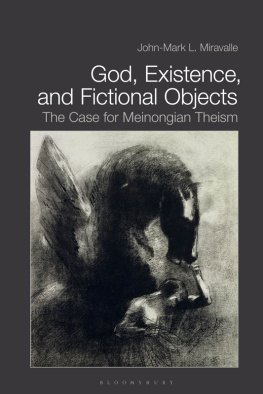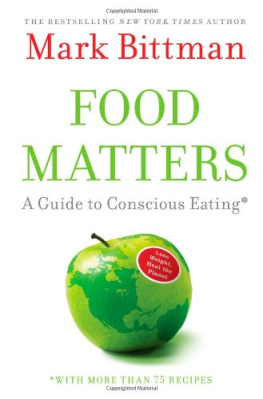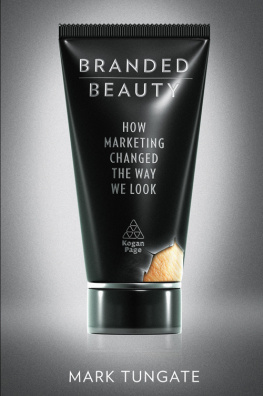John-Mark L. Miravalle - Beauty: What It is and Why It Matters
Here you can read online John-Mark L. Miravalle - Beauty: What It is and Why It Matters full text of the book (entire story) in english for free. Download pdf and epub, get meaning, cover and reviews about this ebook. year: 2019, publisher: Sophia Institute Press, genre: Religion. Description of the work, (preface) as well as reviews are available. Best literature library LitArk.com created for fans of good reading and offers a wide selection of genres:
Romance novel
Science fiction
Adventure
Detective
Science
History
Home and family
Prose
Art
Politics
Computer
Non-fiction
Religion
Business
Children
Humor
Choose a favorite category and find really read worthwhile books. Enjoy immersion in the world of imagination, feel the emotions of the characters or learn something new for yourself, make an fascinating discovery.

- Book:Beauty: What It is and Why It Matters
- Author:
- Publisher:Sophia Institute Press
- Genre:
- Year:2019
- Rating:5 / 5
- Favourites:Add to favourites
- Your mark:
- 100
- 1
- 2
- 3
- 4
- 5
Beauty: What It is and Why It Matters: summary, description and annotation
We offer to read an annotation, description, summary or preface (depends on what the author of the book "Beauty: What It is and Why It Matters" wrote himself). If you haven't found the necessary information about the book — write in the comments, we will try to find it.
Beauty: What It is and Why It Matters — read online for free the complete book (whole text) full work
Below is the text of the book, divided by pages. System saving the place of the last page read, allows you to conveniently read the book "Beauty: What It is and Why It Matters" online for free, without having to search again every time where you left off. Put a bookmark, and you can go to the page where you finished reading at any time.
Font size:
Interval:
Bookmark:
John-Mark L. Miravalle
Beauty

What It Is and Why It Matters
SOPHIA INSTITUTE PRESS
Manchester, New Hampshire
Copyright 2019 by John-Mark L. Miravalle
Printed in the United States of America. All rights reserved.
Cover by David Ferris Design.
On the cover: Church of the Savior (HM7P19) Marina Pissarova / Alamy Stock Photo.
Scripture quotations are taken from the Revised Standard Version of the Bible: Catholic Edition, copyright 1965, 1966 the Division of Christian Education of the National Council of the Churches of Christ in the United States of America. Used by permission. All rights reserved.
Quotations from English translations of papal encyclicals are from the Vatican website (http://w2.vatican.va/content/vatican/en.html) Libreria Editrice Vaticana. All rights reserved. Used with permission.
No part of this book may be reproduced, stored in a retrieval system, or transmitted in any form, or by any means, electronic, mechanical, photocopying, or otherwise, without the prior written permission of the publisher, except by a reviewer, who may quote brief passages in a review.
Sophia Institute Press
Box 5284, Manchester, NH 03108
1-800-888-9344
www.SophiaInstitute.com
Sophia Institute Press is a registered trademark of Sophia Institute.
Library of Congress Cataloging-in-Publication Data
Names: Miravalle, John-Mark L., 1982- author.
Title: Beauty : what it is and why it matters / John-Mark L. Miravalle.
Description: Manchester, New Hampshire : Sophia Institute Press, 2019.
Includes bibliographical references.
Identifiers: LCCN 2019007895 ISBN 9781622827121 (pbk. : alk. paper) ePub ISBN 9781622827138
Subjects: LCSH: Aesthetics Religious aspects Catholic Church.
Aesthetics Religious aspects Christianity. Aesthetics. Christianity
and art.
Classification: LCC BX1795.A78 M55 2019 DDC 111/.85 dc23 LC record available at https://lccn.loc.gov/2019007895
Contents

Part 1
Part 2
Part 3
Conclusion:
Postscript:
Foreword

I still recall the young seminary students reaction to entering the Cathedral of Notre Dame at Amiens for the first time in 1972. So vast was the interior, so balanced the architecture that he felt swept off his feet and thrust forward. Everything he saw pulled him up and away toward the sanctuary, a reminder that Gothic cathedrals were built to make a statement. Anything beautiful does.
Before and since that time, this arresting moment was certainly not unique. I have seen many a beautiful building or painting, heard breathtaking music, read sublime literature, and attended superb dramatic productions. My youthful experience in the Gothic cathedral, however, was a palpable moment in which a sense of weightlessness was the abiding reaction to the presence of beauty. As an old German friend of mine said, Unhappy people do not construct buildings like this. No, they dont, and by extension they bring happiness to the beholder as well. I cannot help but think that this happiness is based on the conviction that truth, beauty, and goodness exist and that the art that endures is the art that surprises us with this shock of recognition. In a cynical world, this perspective is a needed antidote.
Professor Miravalle embraces a formidable task in his short but significant volume. In his own words, The basic thesis throughout this book is that recognizing the goodness of things, and taking delight in that goodness , is a core moral obligation. Before we can speak of moral obligation and imperatives, however, we must acknowledge that art attracts and that it does so by way of beauty. Exploring this concept, Professor Miravalle synthesizes the various thinkers on this subject, beginning with St. Thomas Aquinass profoundly simple definition of beauty, that which pleases when seen, and continuing on with the insights of Plato, Aristotle, and Augustine, down to our own age with the contributions of Jacques Maritain; Pope St. John Paul II; Pope Benedict XVI; and Roger Scruton to name only a notable few.
This question as to why beauty attracts remains, for me, the issue, and the answer is found in surprise. Professor Miravalle introduces the topic in the third chapter, Order and Surprise, and develops a crescendo with it into the fifth chapter, Temptations away from Beauty. This reaches its climax when he writes:
Those who forget the intrinsic connection between order and surprise will think they have to pick one or the other. These are the two temptations... the temptation to pursue surprise without order (which is disorder ) and the temptation to pursue order without surprise (which well call banality ). If human beings have been designed for beauty and we have and if beauty involves surprise, then weve all been designed for surprise.
The wow moment the sensation of being in the presence of something thrilling, something larger than ourselves, not something superficial but transcendent, something we never thought possible this moment is the result of recognizing our human purpose. There is beauty in that moment, and the moment exists because of beauty. Surprise, as the result of an encounter with beauty, makes a connection that affirms both the human and the divine. It affirms balance, order, and a longing for the transcendent. God is, after all, the God of order, not chaos.
Surprise is what makes us stand agape before Michelangelos Last Judgment , close our eyes at the strains of a Chopin melody, or float weightlessly upon entering a medieval cathedral. What is so marvelous is the realization that we might not be the only ones surprised. Perhaps someone else is as well. In the experience of beauty, there is something at once democratic and aristocratic. In being surprised, we have cast our vote, but in the election, we detect the uncovering of something more permanent, transcendent, and universal. Some would call this experience harmonious and exactly what the world desperately needs today.
Professor Miravalle has made a valuable contribution not only to the discussion of the moral demands of beauty but also to the understanding of what makes beauty so necessary for a fuller human life.
+Glen John Provost
Bishop of Lake Charles
October 5, 2018
Acknowledgments

This book began as a course offering at Mount St. Marys Seminary, where they are generous enough to let me teach theology. Id like to begin by thanking the men who enrolled in that first section, for their engagement and insight, which helped immensely in the revision of this final publication: Jim Bors, Michael Castiblanco, Stephen Felicichia, Peter Ferguson, Jared Grossman, Daniel Koehl, Keeton Lockwood, Esteban Mallar, Andrew Meyer, Paul Miller, Robert Murphy, Nico Quintos, Peter Rettig, and Matty Traceski.
Thanks very much to His Excellency Bishop Provost for reading the manuscript and supplying the foreword, and to all those who were willing to read or discuss the themes that went into this project: Joseph Miravalle, Ed ODonnell, Fr. Steve Beseau, Tony Dilulio, Charlotte Ostermann, and Fr. William Goldin.
Thanks, as always, to Jessica, for everything in general and in the case of this book, for support, for proofreading, and for thoughtful and direct criticism, all of which are totally indispensable to ensure that any of my writing is any good.
Next pageFont size:
Interval:
Bookmark:
Similar books «Beauty: What It is and Why It Matters»
Look at similar books to Beauty: What It is and Why It Matters. We have selected literature similar in name and meaning in the hope of providing readers with more options to find new, interesting, not yet read works.
Discussion, reviews of the book Beauty: What It is and Why It Matters and just readers' own opinions. Leave your comments, write what you think about the work, its meaning or the main characters. Specify what exactly you liked and what you didn't like, and why you think so.


